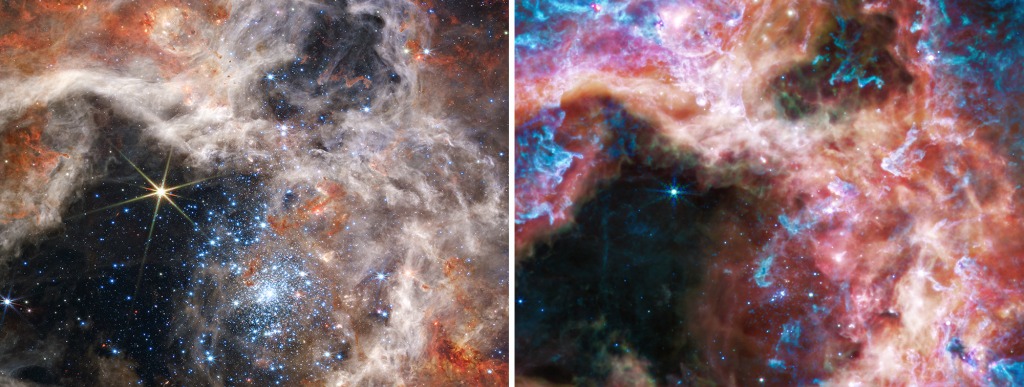Webb Telescope captures rare images of rare star births
New images from the James Webb Space Telescope show astounding images of the Orion Nebula and give a rare look into the way stars and planets are born.
The literally stellar imagery was released Monday by an international consortium of scientists working with the telescope.
“We are blown away by the breathtaking images of the Orion Nebula. We started this project in 2017, so we have been waiting more than five years to get these data,” said Els Peeters, an astrophysicist at Western University in Ontario, Canada.
The nebula, over 1,300 light years away, is intensely studied for its role in the creation of stars from collapsing clouds of gas and dust. It is the closest such star nursery to Earth.
One image from the Webb telescope shows a solar system in the making, with discs of dust and gases — future planets — beginning to form around a young star.
Elsewhere in that image, scientists identified a newborn star in its “natal cloud,” the remnants of the gravitationally unstable gaseous formations that collapsed to form the star.
“These new observations allow us to better understand how massive stars transform the gas and dust cloud in which they are born,” Peeters said in a statement.

“Massive young stars emit large quantities of ultraviolet radiation directly into the native cloud that still surrounds them, and this changes the physical shape of the cloud as well as its chemical makeup,” she continued. “How precisely this works, and how it affects further star and planet formation is not yet well known.”
Gorgeous red light — the reflection of ambient starlight — can be seen surrounding a star known as θ2 Orionis A.
θ2 Orionis A, the brightest star in the image, is just barely visible with the naked eye from Earth.

The images are composites of the same region taken with several filters, highlighting ionized gas, hydrocarbons, molecular gas, dust and scattered starlight.
The Webb is unique among space telescopes in its high sensitivity to infrared light. While the Orion Nebula’s stellar nursery has been photographed extensively by the Hubble Space Telescope, the older Hubble was also built to see primarily in visible and ultraviolet light. This allows the Webb to peek even deeper into the dust clouds that dominate the nebula.
“We have never been able to see the intricate fine details of how interstellar matter is structured in these environments, and to figure out how planetary systems can form in the presence of this harsh radiation. These images reveal the heritage of the interstellar medium in planetary systems,” said Emilie Habart, an associate professor at France’s Institut d’Astrophysique Spatiale.
The Webb, launched last Christmas, is currently over 1 million miles away, at a point known as “Lagrange point 2,” where satellites can most easily orbit and have a clear view of deep space.
Read the full article Here


